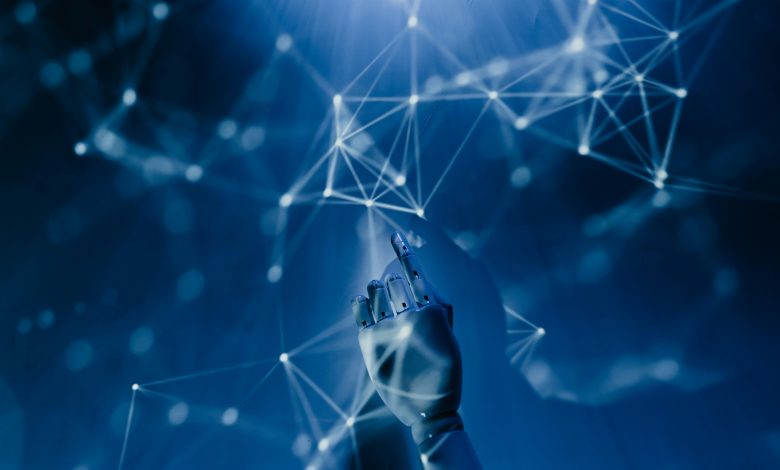
On the Internet, jokes can quickly get out of hand. Add AI into the mix, and they can travel halfway towards the moon. That’s what happened when someone launched a large language bot on X (formerly Twitter), which ended up creating a memecoin that briefly touched a valuation of $500m.
It’s an amusing story, but its more profound significance couldn’t be more serious. Autonomous agents can now transact independently of their creators, making decisions, executing payments, and negotiating contracts.
Is this the beginning of a new era of efficiency and financial opportunity – or a fateful step on the road to a robot-run dystopia? Thanks to stablecoins, the outcome is still in human hands.
Guardrails for the Revolution
Like any technology, artificial intelligence is morally neutral. The risks of AI are real, but they all arise from our inability to install effective oversight mechanisms, build accountability into the system, and establish adequate guardrails.
Without these capabilities, AI systems could easily outpace human oversight, leading to critical aspects of our economy, including markets and governance, becoming dominated by unaccountable algorithms. Yet, at the same time, the value of AI lies in its ability to automate processes and make better, faster decisions than humans (and more accurate, less error-prone transactions).
When it comes to building the financial infrastructure of the future, we have to walk a fine line: trusting AI with these tasks, without ceding too much control. The guardrails we develop must prioritise utility and autonomy of AI-powered finance, while ensuring humans continue to set the rules.
That shouldn’t be impossible. The question is, which layer of the financial ecosystem is best suited for these safeguards?
Enter stablecoins
Stablecoins are much more than tokens; they represent the greenback on the blockchain. They’re the liquidity layer for decentralized finance, enabling instant, low-cost transactions for tokenized assets, money market funds, ETFs, and may even represent the de facto medium of exchange of the future.
Unlike volatile crypto assets or geographically constrained fiat rails, stablecoins provide AI agents with the reliability, speed, and interoperability they need to function across ecosystems and blockchains.
But even this doesn’t capture the full significance of stablecoins. Because they are a ‘common currency,’ they are ideally suited as the layer that ensures a transparent, rules-based global AI economy. Tied to the blockchain and pegged 1:1 to real-world assets, stablecoins are the “foundational primitive” that enables autonomous AI agents to operate, natively, immutably, and verifiably, on-chain.
They are thus the antithesis–and the antidote–to proprietary, black box AI technologies from centralized Big Tech, which are often opaque and uninspectable by design.
Putting People First
The biggest mistake when preventing AI hegemony is to think of this as a purely technological or regulatory question. At least as necessary is creating an AI economy that empowers people, protects our interests, and enables us to retain control.
World (formerly Worldcoin) is an excellent example of implementing these principles. The platform provides a unique, biometrically verified “World ID” that can be used to distinguish real humans from bots and AI, ensuring that human transactions have priority, and preventing AI over-reach without limiting its utility.
Stablecoins play an essential role, with Worldcoin recently announcing direct conversion between fiat and USDC on the layer-2 blockchain. This enables global on/off-ramps and cross-chain swaps with no third-party bridges.
Putting people first is the ultimate “carrot” to that will do more to create a secure, trusted AI economy than the stick of regulation. That’s why we’re seeing platforms like Stripe, Circle, and Bakkt explore programmable loyalty and rewards systems, which can negotiate and transact on behalf of users–but within stringent rules and budgets to avoid irresponsible or unsanctioned spending.
AI-Stablecoin symbiosis
There’s a complicated beauty in the AI-stablecoin relationship. The one is not merely a layer on the other; they exist in an inextricable symbiosis. Just as stablecoins sustain the AI economy and provide the rails that keep it on track, AI is foundational for stablecoins. From real-time compliance monitoring to dynamic reserve management, artificial intelligence ensures stablecoin platforms are optimised for efficiency and risk mitigation.
Creating systems with humans firmly at the top of the chain can be leveraged across multiple AI-powered markets, ensuring that while some AIs can manage other AIs, humans retain the role of CEO and ultimate decision maker. AIs can also help with compliance enforcement, be it for humans or bots, but again, humans must retain the ability to oversee the watchers.
Achieving this requires prioritizing human agency, which, as projects like digital ID and programmable rewards programs show, is perfectly possible when approached with the proper mindset.
This shift is quietly expanding the stablecoin user base beyond humans: as more AI agents transact in stablecoins, more people are indirectly pulled into the digital asset ecosystem–often without ever interacting with a crypto wallet themselves. The agentic era isn’t just accelerating stablecoin adoption; it’s reshaping what adoption means altogether.
When combined with blockchain and the power of decentralization to rein in AI by keeping it transparent and auditable, AI’s ability to reshape our world becomes supercharged. However, as we stand on the cusp of an AI-powered future, one goal should remain at the forefront of developers’ minds: ensuring that humans have the last laugh – and the ultimate say – in the AI revolution.


